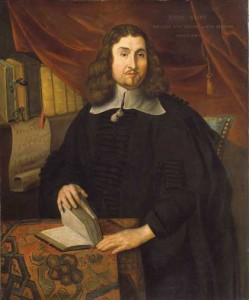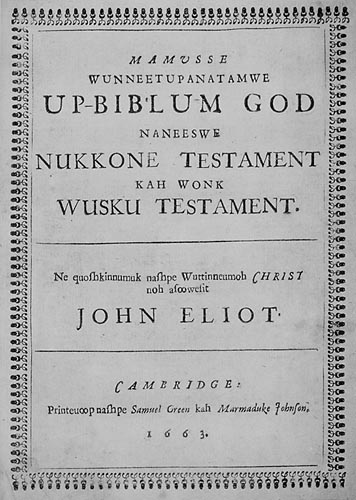 Another early Puritan leader was John Eliot, who developed a heart for bringing the Gospel to the natives. Critics today would say he was infringing on their native religion and flexing the muscles of cultural superiority. That’s not how Eliot saw it. What he perceived was a people worshiping the creation rather than the Creator. They needed to know the One who forgives sins and brings new life.
Another early Puritan leader was John Eliot, who developed a heart for bringing the Gospel to the natives. Critics today would say he was infringing on their native religion and flexing the muscles of cultural superiority. That’s not how Eliot saw it. What he perceived was a people worshiping the creation rather than the Creator. They needed to know the One who forgives sins and brings new life.
One account of Eliot’s life states:
Eliot became inspired with the idea of converting the Indians. His first step was to learn their dialects, which he did by the assistance of a young Indian whom he received into his home. With his aid he translated the Ten Commandments and the Lord’s Prayer. John Eliot first successfully preached to the Indians in their own tongue at Newton in October 1646. At the third meeting several Indians declared themselves converted, and were soon followed by many others.
John Eliot induced the Massachusetts General Court to set aside land for their residence. The Court did so, and also directed that two clergymen be annually elected by the clergy as preachers to the Indians. As soon as the success of Eliot’s endeavors became known, the necessary funds flowed in upon him from private sources in both Old and New England. In July 1649 parliament incorporated the “ Society for the Propagation of the Gospel in New England,†which supported and directed the work inaugurated by John Eliot. In 1651 the Christian Indian town founded by Eliot was removed from Nonantum to Natick, where residences, a meeting-house, and a school-house were erected, and where Eliot preached, when able, once in every two weeks as long as he lived.
John Eliot’s missionary labors encouraged others to follow in his footsteps. A second town under his direction was established at Ponkapog (Stoughton) in 1654. His success was duplicated again in Martha’s Vineyard and Nantucket, and by 1674 the unofficial census of the “praying Indians†numbered 4,000. At Eliot’s death, which occurred at Roxbury on the 21st of May 1690, the missions were at the height of their prosperity.
 Eliot’s greatest feat, alongside his preaching, was to develop a written lanaguage for the Indians and to provide them with their own version of the Bible.
Eliot’s greatest feat, alongside his preaching, was to develop a written lanaguage for the Indians and to provide them with their own version of the Bible.
The New Testament was at last issued in 1661, and the Old Testament followed in 1663. The New Testament was bound with it, and thus the whole Bible was completed. To it were added a Catechism and a metrical version of the Psalms. This book was printed in 1663 at Cambridge, Mass. . . . and was the first Bible printed in America.
How many Americans know of John Eliot’s labors? Well, maybe a few more know now.
